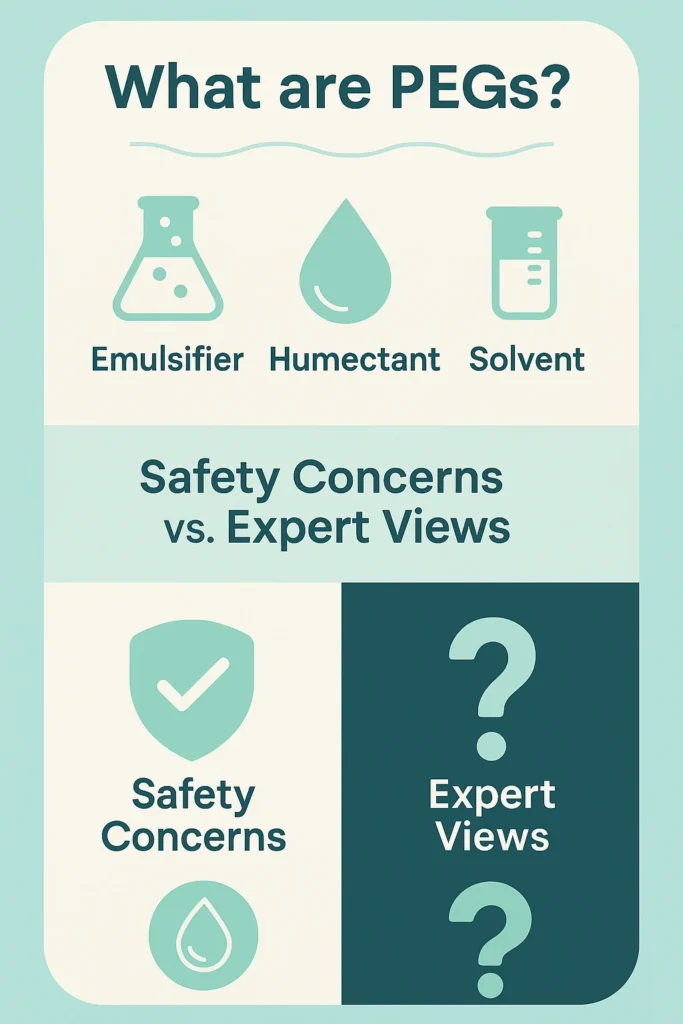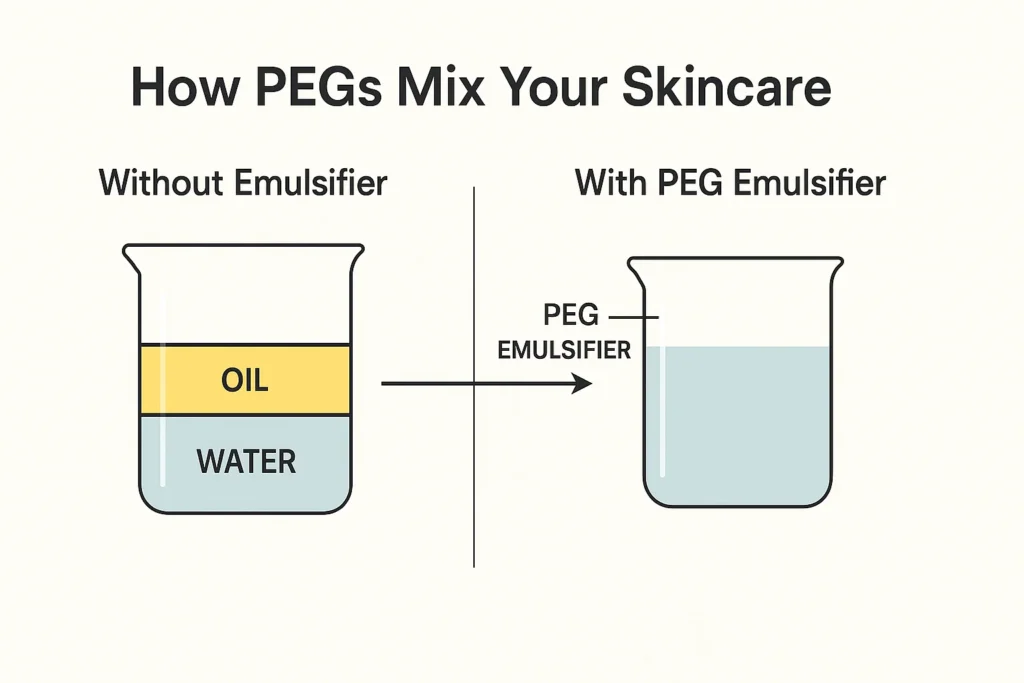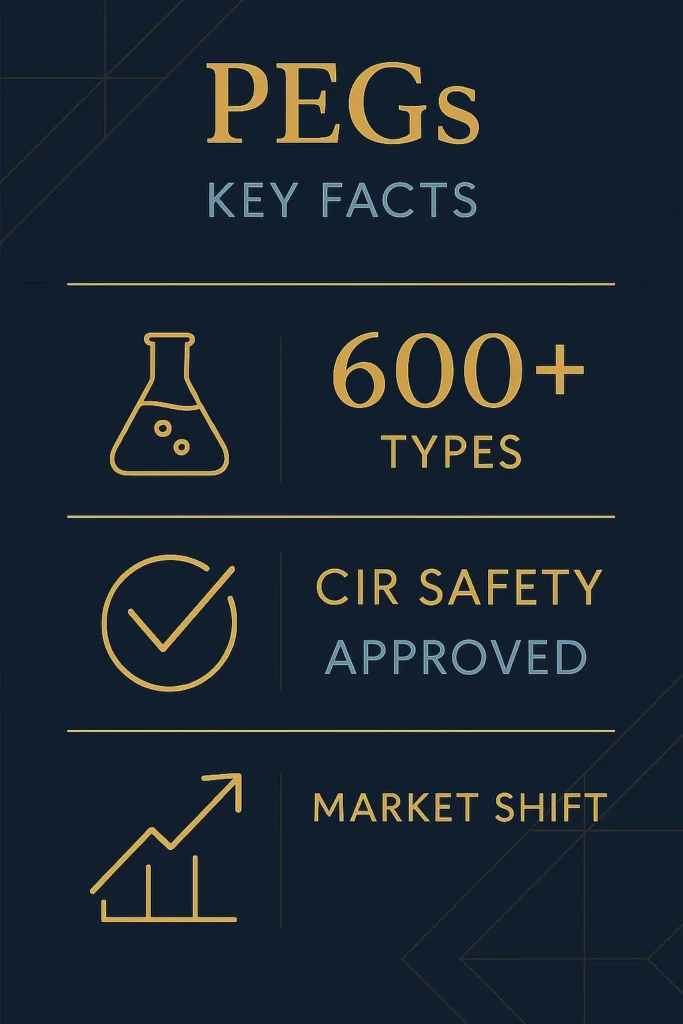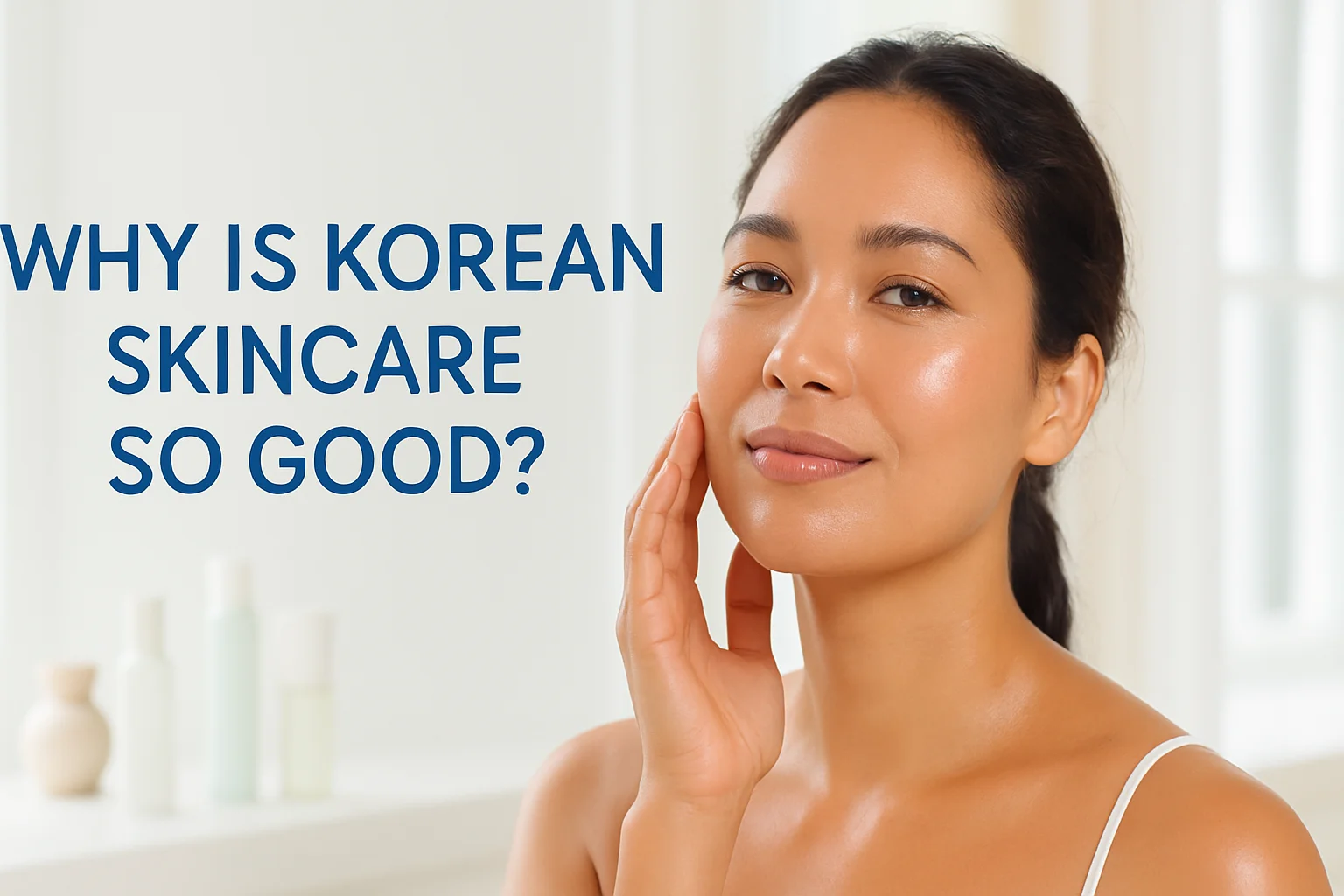Polyethylene glycols (PEGs) are common ingredients in many skincare products. They help your skin in different ways. This guide explains what PEGs are and how they affect your skin.
In a Nutshell: Understanding PEGs in Skincare
- You will learn what PEGs are and why they are in skincare.
- You will see how PEGs help products work better.
- You will understand the safety of PEGs for your skin.
- You will get tips for choosing products wisely.
Estimated reading time: 8 minutes
Ever wonder what some of the long names on your skincare labels mean? Many people do. One common group of ingredients is called PEGs. Knowing about PEGs helps you make smart choices for your skin.
What are PEGs?
Polyethylene glycols (PEGs) are man-made ingredients. They come from combining ethylene oxide and water. PEGs come in many forms. These forms can be liquid or solid.

Their size changes how they act. Smaller PEGs can get into your skin more easily. You will often see “PEG” followed by a number on labels, like PEG-40. This number shows the size of the PEG molecule. PEGs are part of a group called polyethers.
How PEGs Help Your Skin
PEGs do many jobs in skincare. They make products feel good and work well.

- Soften Skin: PEGs act as emollients. They make your skin feel smooth. They also help lock in moisture.
- Attract Water: They are humectants. This means they pull water into your skin. This helps keep your skin hydrated.
- Mix Ingredients: PEGs are great emulsifiers. They help oil and water mix together. This keeps creams and lotions from separating.
- Dissolve Things: They work as solvents. PEGs can dissolve other ingredients. This makes sure your product is smooth and even.
- Thicken Products: They can make creams thicker. This gives products a nice texture, like a velvety feel.
- Help Ingredients Absorb: PEGs can help other good ingredients get deeper into your skin. This is why they are called penetration enhancers.
You can find PEGs in many products. These include cleansers, moisturizers, sunscreens, and even makeup.
- Read Labels: Look for “PEG-” followed by a number.
- Know Derivatives: Watch for names like Ceteareth, Steareth.
- Patch Test: Try new products on a small skin area first.
Types of PEGs in Skincare

There are over 600 different PEG-related ingredients in cosmetics. Most are in products that are not organic. Some common types include:
- PEG stearates: Examples are PEG-40 stearate.
- PEG ethers: Like Ceteareth-3.
- PEG esters: Such as PEG-6 caprylic/capric glycerides.
Many PEGs are mixed with fats or oils. This gives them special uses.
Are PEGs Safe?
There has been talk about the safety of PEGs. Here are the main points:
- Skin Entry: Smaller PEGs can help other things get into your skin. This raises a concern if those “other things” are harmful.
- Possible Contamination: The way PEGs are made can sometimes leave behind tiny amounts of unwanted chemicals. One is called 1,4-dioxane. This chemical is thought to cause cancer.
- Irritation: Some people with sensitive skin might get irritation or allergies from PEGs. This is more common with certain types, like PEG ethers.
- Long-term Use: Since PEGs are in many products, some wonder about using them over a long time. More research is always happening here.
But here’s the important part: Expert groups like the Cosmetic Ingredient Review (CIR) panel have looked closely at PEGs. They say that PEGs are safe when used in the right amounts in skincare products. For example, PEG stearates are used safely in baby lotions. The FDA also checks cosmetic ingredients to ensure they are safe.
What Consumers Think (2025 Trends)
Many people in the U.S. are now looking for “clean beauty” products. They want to avoid ingredients made from oil. This has made some brands avoid PEGs. Social media also plays a big role in what people think about ingredients.
This trend has led to:
- More products using natural mixers, like lecithin.
- People checking product ingredients more closely.
- New ways to make ingredients that are not from oil.
Even with this, PEGs are still popular. They are cheap, stable, and work well. Many skin doctors confirm that PEGs are safe and effective. This is true when they are made correctly and meet safety rules. You can learn more about how PEGs work on sites like Glow Recipe.
Smart Choices for Your Skin
Here are some tips for you when buying skincare:
- Read Labels: Look for “PEG-” on the ingredient list. PEGs can have many different names.
- Test Your Skin: If you have sensitive skin, try a new product on a small area first. See how your skin reacts.
- Think About Product Type: PEGs in products you wash off (like shampoo) are less of a concern. They don’t stay on your skin long.
- Check Brands: Good brands are open about how they make their products.
- Balance Benefits: PEGs offer benefits like smooth textures and better absorption. Natural options may not always do the same job yet.
I’ve personally found that some “clean” products don’t always give me the texture or feel I like. Sometimes, a product with a small amount of PEG can feel much nicer and still be gentle on my skin. It’s about finding what works best for your skin.
Is It a PEG? Check Here!
Conclusion
In 2025, understanding PEGs in skincare is still important. They are very useful ingredients that help products work. While some people worry about them, experts say they are safe in the right amounts. Knowing about PEGs helps you make informed decisions for your skincare routine.
A simple tool to help you identify if an ingredient is a PEG or a common PEG derivative.
The logic used is simple text matching. It checks if the entered ingredient contains common PEG prefixes or known PEG derivative names. This widget would be best placed after the “Smart Choices for Your Skin” section, offering a practical tool.
Your Questions About Understanding PEGs in Skincare Answered (Simply)
What are PEGs in skincare products?
Are PEGs safe for sensitive skin?
Why do some brands avoid PEGs?
How can I tell if a product has PEGs?
Do PEGs help active ingredients work better?
Are all PEGs the same?
What are common PEG alternatives?

- Clinically proven to reduce dark spots
- Safe, non-irritating botanical formula
- Visible results in just 2 weeks
- Deeply moisturizes all day long
- Boosts skin’s natural hydration barrier
- Lightweight, non-greasy texture
- Increases firmness and elasticity
- Minimizes fine lines & wrinkles
- Dermatologist-approved formula
- Targets old & new stretch marks
- Derm-tested for sensitive skin
- Results in as little as 4 weeks
- Soothes inflammation immediately
- Reduces flare-ups over time
- Fragrance-free & non-comedogenic
- Powered by collagen-boosting peptides
- Improves skin tone & texture
- For all skin types, even sensitive
- Improves scar texture & appearance
- Clinically tested on keloids
- Feel smoother, look renewed


